Preparing the Meditation Ground
Printed in the Winter 2018 issue of Quest magazine.
Citation: Oliver, Lucy, "Preparing the Meditation Ground" Quest 106:1, pg 24-25
By Lucy Oliver
Many years ago I read the following description of meditation and shivered slightly. Apprehension? Inspiration? Hard to say.
As a darkened chamber in the high desert when all is still before the dawn. That word, too fast to be followed, too slow to be comprehended, so powerful to shake even the depths, so gentle and immovable, both speaker and listener, cause and end. Who understands it understands nothing, who declares its likeness lies; who knows it is ignorant; who does not know is ignorant. He who knows it as his centre lies, who does not know it as his centre is mistaken, for it is high noon in the busy city. (Davies, 71)
There’s the scene—darkness in an enclosure in the desert, apparently grappling with unearthly paradox. Seems that meditation is not for the faint-hearted! The darkness is sensory, for the meditation ground requires withdrawing from normal sensory engagement with outer objects in order to apprehend more subtle, inner sensations. Sense objects include thoughts, for the mind is classified as a sense in Buddhist metaphysics. The mind seems indissolubly wedded to its relationship with thought until, with experience, a meditator is able to take a stand in the darkness from ordinary mind, and know a different kind of perception.
Then, with senses darkened, an inner chamber is created, an enclosure, an ark in the desert of interactions with the world. It’s not a low desert of depression and inertia, when life loses meaning and emotions run dry, but a high desert, when those kind of meaningful interactions are consciously suspended. Their absence creates a desert of sense, poised and still, just on the edge of dawn—on the edge of meaning, awaiting illumination from a yet hidden sun.
Meditators in all traditions, no matter what the method or context, should recognize the description, having had some experience of those moments when “the grinders cease . . . and those that look out of the windows be darkened.” And then perhaps “he shall rise up at the voice of the bird” (Ecclesiastes 12:3–4). Commonly, during or after a long course or retreat, the experience of this kind of potency can feel like a world away from the daily hubbub. It is when your eyes are clear and still, and see into people and situations instead of grazing across the surface. It is the meditation ground prepared and waiting, but at the same time, it is not merely preparatory: it is meditation. It is what we meditators have in our hearts when we start out, and what we have to hold on to through the years when circumstances, routine, or disillusionment threaten our practice.
The task of preparing the ground for meditation involves tilling the soil on a daily basis, and depends more on consistency than on some sort of Herculean effort. Weeds may be quick to grow, and especially in the early stages, the grass in the other field always looks greener. (“Perhaps I should be . . . ? And how is it that other people seem to have reaped a wonderful crop of something—ideas, writings, followers, prestige . . . ?”)
A desert, by definition, would appear to be a poor ground for growing anything. But somehow, in the “high desert, when all is still,” none of this matters. Not even the questions: Will the dawn come? I’ve worked and I’m waiting, but will I see dawn?
Expectations of fruition, the payoff, arrival, enlightenment are the driving force behind many a determined meditator. Yet we can never know what any dawn will bring. Triumph or tragedy, daylight simply declares it all. Ideally, the true scope of meditation will slip beyond our grasp at some point, because if it did conform to our expectations, however grandiose, the real potential would be limited and circumscribed by our fantasies or beliefs.
Nonetheless, the ground is workable, and it’s entirely reasonable to expect that with proper attention, care, and consistency, conditions can be set up to know a field of potency, of peace. What is more, it’s not that difficult, and every dedicated long-term meditator will have tasted it.
But is it ground for a seed to grow, a divine seed, which is creative, transformative, living, emerging from the potential of the ground to become realisation of a new kind of life? Where would such a seed come from? How is it planted? What is its nature?
The Seed
With the understanding that ground and seed in this metaphor are not two things, but a unity of aim, practice, and experience, let us examine the seed aspect. The “word” in the passage above is one such seed, and belongs in the tradition of the via negativa, or neti, neti, “Not this, not this.” Whatever can be said of it is wrong, and yet it is “powerful to shake even the depths.” It is never the truth to say what it is, but pursuing descriptions of what it is not creates a potent vacancy in the middle of the conceptual field. All conceptions generated by mind turn inward and genuflect, and mind itself comes to rest. In this vacancy or emptiness, the seed germinates.
The Word or Logos as a symbol for the creative seed has a long tradition in both East and West. In the singular, it has a specific meaning, not just the general “word of God,” as teachings or scripture, but the ultimate symbol of something very small which contains limitless creative power and meaning: a word, mere sound, vibration. In Christianity, Christ as Logos is an embodiment of creative truth, incarnating otherwise intangible truths into the limitations of flesh. In the context of meditation, the Word is an object of attention used to focus meditation, particularly when it is sound-based, as in mantra.
Some examples of sound in meditation:
From a Western source is the instruction in the classic fourteenth-century text The Cloud of Unknowing: “Take a short word of one syllable” and “hammer the cloud and the darkness above you” (Cloud of Unknowing, 69). Here the word is like a lance, aimed to pierce through the darkness of not-knowing, or to “pierce heaven,” as the author describes it, and so the smaller and sharper the word, the better.
The Sepher Yetzirah, an ancient text from the Jewish Kabbalah, says that the twenty-two letters of the Hebrew alphabet can become sound combinations and used for meditation, while you “hold your mouth from speaking and your heart from ruminating, and if your mouth runs into speech and your heart begins to ponder return to the foundation. . . . on this recognition is the Covenant based” (Sepher Yetzirah, 159).
The Vedic tradition has a well-developed system of seed-syllables, called bija. Each Sanskrit syllable, mostly composed of a consonant, vowel, and nasalization, is designed to create an energetic vibration in a particular center of energy or chakra in the subtle body. The position of the tongue and breath create a particular vibrational frequency. As a meditation technique, the mantra syllable is repeated continuously, and, interestingly, is said not to depend on conscious attention for its efficacy. Mantra repetition can be a background to conscious awareness, a never-ceasing stream of sound sustained by conditioning set to automatic, while allowing the everyday mind to get on with other things. Details of the specific correspondences in this Indian system are readily found. One version is:
LAM for muladhara, the base chakra
VAM for swadhisthana, the sacral chakra
RAM for manipura, the solar plexus chakra
YAM for anahata, the heart chakra
HAM for vishuddha, the throat chakra
AUM for ajna, the third-eye chakra
AH for sahasrara, the crown chakra
It’s wise to note, however, that any stylized symbolism lends itself to gross handling—that is, to materialistic and superstitious suggestions that rewards can be obtained by a coin-in-the-slot approach: select the chakra you want to activate, repeat the appropriate mantra, and open sesame! A brief glance at the Internet or some of the literature will reveal that the naive literalist approach is always with us.
Repeating a mantra supplants internal chatter, and when it becomes automatic, a subliminal unified foundation replaces the scattered involuntary meanderings of the mind. It’s possible at the same time to think, speak, or engage with the environment, or, in meditation, to engage with silence while the sound is still present. The wave nature of sound permits vibrational energy to be sustained, aloud or silently, until the actual sound-quantum drops away. At this point paradox enters, for it is “not this; not this.” Or, in contemporary symbolic language, both wave and particle are present.
It seems that a child in the womb responds to sounds, so the hearing sense is operating before birth, and hearing is the last sense to be extinguished at death. The first and last engagement with the sensory world is sound, penetrating the chamber of the womb and fading with external conscious awareness at the ending of life.
Besides language and sound-based meditation, of course the breath, image (yantra or mandala), evocation, and a variety of other foci for attention are common seeds. The effects are slightly different for each, but the ground has to be prepared in the same kind of way—with psychological and physical discipline, attitude, consistency, and silence.
In the passage at the beginning of this article, which comes from the tradition in which I have practiced most of my life (High Peak Meditation), the seed-word is described as “both speaker and listener, cause and end,” and thus transcends the duality of a subject and object. You, the meditator, speak the word and hear it; are active and passive simultaneously. Although paradoxical, it’s not just a neat trick. Finding the kind of balance that is neither one nor the other, neither this nor that, is the essence and deepest aim of any true form of meditation. It does not matter whether it is a “busy” form, with lots of precise instructions and visualizations, such as certain Tibetan types, or the simplicity of Zen, just sitting or following the breath. When the scattered mind is unified, and all conceptual threads are pulled into a single focus, presence is different. Being is different. If one knows this, no other justification is needed.
It’s true that not every technique called meditation has the same aim. Some are highly manipulative and product-oriented. However, if you want to uncover the potential of a divine seed as mantra, you have to let go of the wish to manipulate, to send the sound here or there, and to make it work for you. A seed is a living thing. The germinating principle within it is mysterious, not visible when you cut it open. If you plant it, you are invoking the life within it—its life, not yours. You can see the structure, the mechanism, but you cannot see within it the mysterious germinative force that will propel into existence a tiny violet, let alone a giant redwood tree.
In some way, every word spoken or written is a carrier of information, a symbol, conveying meaning, which germinates in the recipient to a greater or lesser extent. Communication is really a transaction between information clouds, or meaning clouds, surrounding the words. So, given that we are effectively trading in cloud formations, should we be surprised how often they get scrambled and we misunderstand each other?
However, if you take and repeat a sound or syllable that has no conceptual meaning in any particular language—not just any old sound, but one designed consciously, as, for instance, vowels found almost universally—you are using an abstract seed. The advantage of abstraction is that it avoids the cloud of associations round a word, and therefore it forestalls any unintended consequences and involuntary associations from past experience which routinely surge up when one’s guard is lowered, as it must be to meditate deeply.
As mental activity dies down, repetition will create a vibration from the shape of tongue, breath, and lips, and the subtle body responds, which may release emotional knots. Systems with an abstract infrastructure, for example combining letter-sounds according to certain principles, utilize the penetrating power of pure sound without the burden of meaning, making it easier to settle into silence as the breath becomes finer and almost ceases. Such systems directly invoke the high desert.
A true mantra or sacred word/syllable is precise. The seed will germinate a particular kind of life, if it grows at all. How can this happen?
Transmission: The Mystery of the Seed
The mystery of the seed is more than the technique. Whatever form it takes, tradition has it that a mantra imparted by a guru or a realized teacher has power and efficacy in a way that selecting a mantra for oneself does not. Transmission, passing on or awakening inner growth in another person, bestows the precious germ of life, and has an impact on many levels of psyche. It can be sudden and life-changing, or a ritualized handing-on, but the principle is simple: if one person inhabits and knows inner silence and is present with it, someone else can pick up the resonance, as a singing-bowl resonates when it is struck. Consciousness speaks to consciousness, “deep calleth unto deep” (Psalm 42:7), so a mantra given this way has a powerful penumbra and is a living seed. Deeply planted, with the power of conscious intent, it will go on resonating its significance so long as its life is tended, but the instructions and teaching to support it are also essential if it is to flourish. Ongoing guidance puts a hoe in your hand for preparing the ground and keeping it clear.
Despite the mystique and awe associated with it, the practical reality of oral transmission is not as arcane or rare as esoteric legend suggests, although its value cannot be overestimated. One form of transmission is simply the effect of human contact—to enliven and motivate, as if the field of another’s presence interacts with one’s own personal field and the resonance awakens a response. Personal interaction is always different from reading words or even hearing at a distance. In this way even a humble practitioner through their own dedication can transmit the lineage of their training. The lineage contains the power, not the individual; indeed a personal ego is an impassable block to the process. Naturally, the more directly and clearly someone is able to see into original nature, the more powerful is his or her influence to awaken the same in another. The basis of receiving as well as initiating transmission is the development of a true faculty of discernment, and so, by both education and practice, becoming sensitive to those echoes from Infinity in the Word “too fast to be followed.”
Time is also needed. Maybe a lot of time, for reading, study, focused discussion, and debate to help nurture that little seed. Personal guidance is possibly the most important part of the transmission process. All too easily circumstances can freeze, burn, or uproot the seed, or forgetfulness can allow it to wither. On the one hand its existence is fragile, “so gentle and immovable” but on the other “powerful to shake even the depths.” And so the intangible power of the word-seed is poised against the fragility of human resolve.
Yet, in age after age, inner knowledge has been preserved and passed down. Seeds have different shapes and sizes, as lineages and methods differ, but every tree in a forest is different, and no two roses are exactly the same. In each individual form is a common life, a center that is both known and not known, and with the unfolding power of discernment, dawn in the desert morphs into “high noon in the busy city.”
The meditation ground can be located anywhere. The chamber travels with you, and the stillness before dawn is always present, for it is high noon, the hour of transition when the bells of the Angelus used to ring in Christian Europe to remind man, woman, and beast to lay down tools and take a breath, honoring and remembering the spirit—the seed within.
Then it was back to field and plow, and back we go to the busy city.
Sources
The Cloud of Unknowing and Other Works. Translated by Clifton Wolters. Harmondsworth, Middlesex, U.K.: Penguin, 1961.
Davies, W.G. The Phoenician Letters. London: Mowat, 1979.
Sepher Yetzirah: Book of Formation. Translated by Gila Zur and W.G. Davies. Unpublished ms., 1976.
Lucy Oliver has been a teacher and practitioner of meditation derived from Western oral tradition for over forty years. Her book, The Meditator's Guidebook (Inner Traditions), has been in print since 1996. She lives in London, and her research into sacred symbolism at Oxford University became Symbolic Encounters, a method of pointing out the symbolic roots in language on a path of knowledge (www.meaningbydesign.co.uk/). She was a founding member of Saros Foundation for the Perpetuation of Knowledge and of High Peak Meditation, established in the United Kingdom in the 1970s as a systematic approach to meditation based on the sounds and symbols which underlie language, and on the principle that the direction of meditation is towards the source of one’s being, common to all humanity regardless of religion or belief.


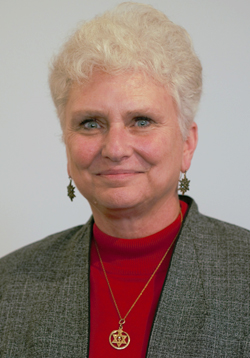 Recently I had the opportunity to travel into the city of Chicago to visit friends. It was a lovely fall weekend, and there were people everywhere. Watching this small sea of humanity—various ages, different cultures, diverse styles of clothing, and so on—I was seized with a sense of wonder. Where are they all going? Where have they all come from? What are their lives like? What challenges do they face? How do they handle them? These people are all dissimilar, but yet are all unified at the core.
Recently I had the opportunity to travel into the city of Chicago to visit friends. It was a lovely fall weekend, and there were people everywhere. Watching this small sea of humanity—various ages, different cultures, diverse styles of clothing, and so on—I was seized with a sense of wonder. Where are they all going? Where have they all come from? What are their lives like? What challenges do they face? How do they handle them? These people are all dissimilar, but yet are all unified at the core.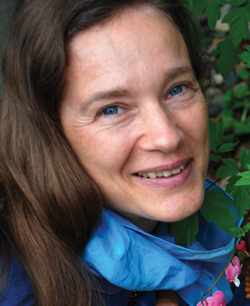 The celebrated physician Paracelsus (1493–1541) saw the doctrine of signature as a proof of how microcosm and macrocosm were analogous—as above, so below. He says in Astronomica magna: “The expert must know how to recognize the virtue of all things thanks to the signs, be it an herb, a tree, a living being, or an inanimate object.” While this thought originates from his alchemical studies, which are pre-Christian, as a devout Christian he concludes by writing that this is because God created things as such, and that he left signs for us to discover the virtues he has hidden in all of creation. It is quite noticeable how, throughout his work, entire passages are free from any Christian notions, while others attribute everything back to a creator God.
The celebrated physician Paracelsus (1493–1541) saw the doctrine of signature as a proof of how microcosm and macrocosm were analogous—as above, so below. He says in Astronomica magna: “The expert must know how to recognize the virtue of all things thanks to the signs, be it an herb, a tree, a living being, or an inanimate object.” While this thought originates from his alchemical studies, which are pre-Christian, as a devout Christian he concludes by writing that this is because God created things as such, and that he left signs for us to discover the virtues he has hidden in all of creation. It is quite noticeable how, throughout his work, entire passages are free from any Christian notions, while others attribute everything back to a creator God.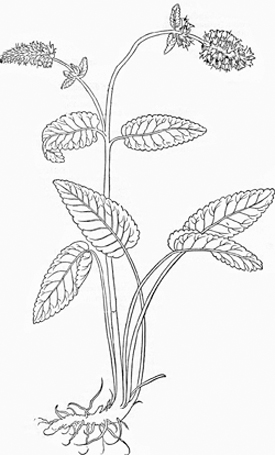
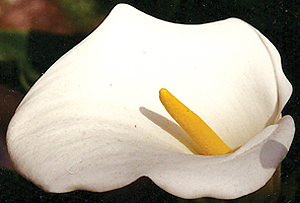
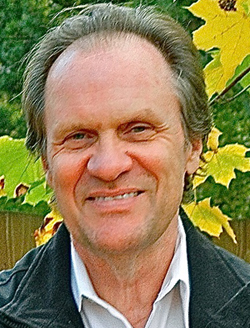 During the 1960s, the Beatles and Beach Boys were making highly publicized pilgrimages to India, just as a flood of volumes on mystical and metaphysical topics began appearing on bookstore shelves almost everywhere. One could turn on a nighttime talk show and see Maharishi Mahesh Yogi talking to host Johnny Carson about the benefits of meditation, or watch a movie star demonstrating some exotic yoga pose or even speaking favorably about the value of astrology in their life. So it really wasn’t all that unusual for a Midwestern teenager like me to start turning away from my conventional religious upbringing and start looking to faraway sources for the answers to many of life’s pressing questions.
During the 1960s, the Beatles and Beach Boys were making highly publicized pilgrimages to India, just as a flood of volumes on mystical and metaphysical topics began appearing on bookstore shelves almost everywhere. One could turn on a nighttime talk show and see Maharishi Mahesh Yogi talking to host Johnny Carson about the benefits of meditation, or watch a movie star demonstrating some exotic yoga pose or even speaking favorably about the value of astrology in their life. So it really wasn’t all that unusual for a Midwestern teenager like me to start turning away from my conventional religious upbringing and start looking to faraway sources for the answers to many of life’s pressing questions.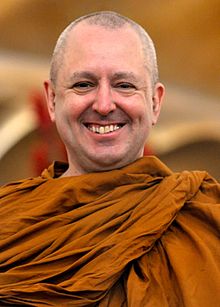 Richard : Fifty years ago, meditation was very little known in this country and in the West in general, and now it’s very well known. What do you make of all this?
Richard : Fifty years ago, meditation was very little known in this country and in the West in general, and now it’s very well known. What do you make of all this?